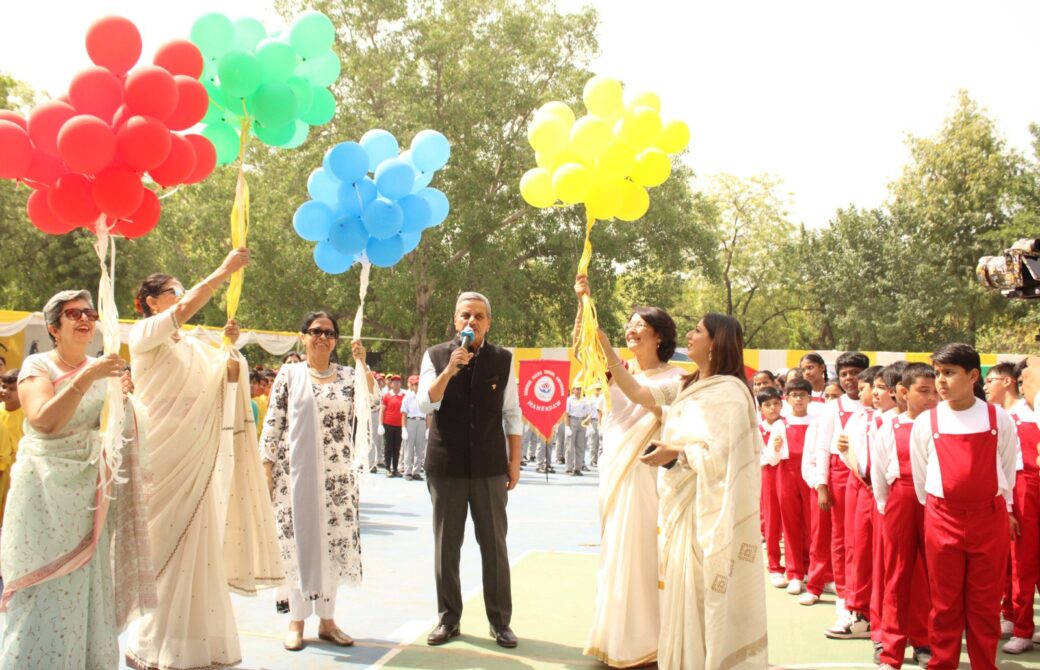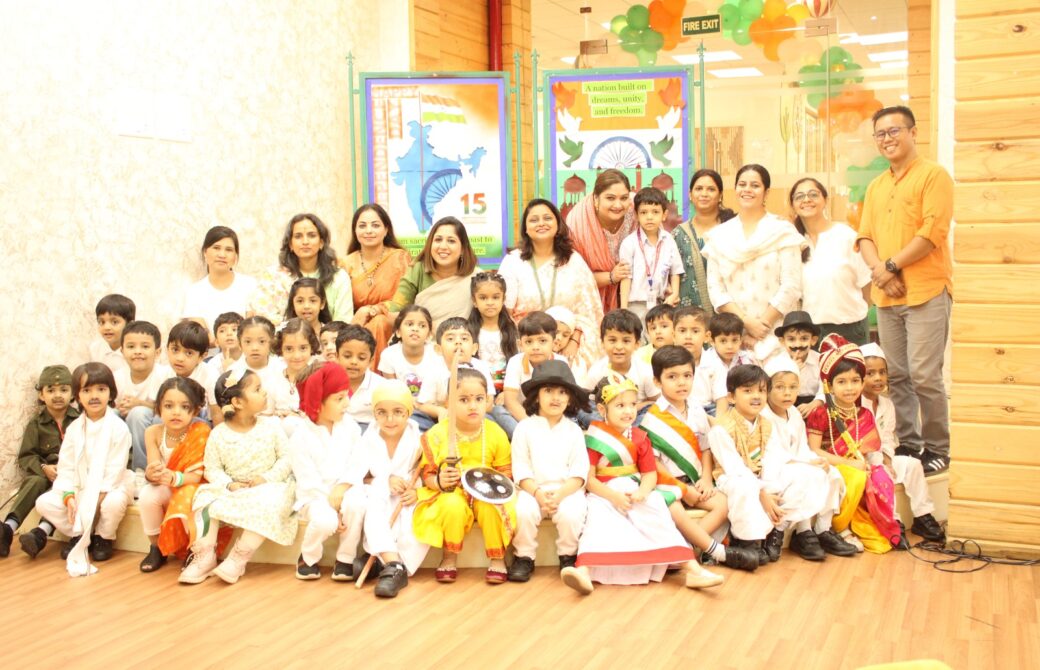Introduction:
Every child is unique, with different interests, learning styles, and speeds of grasping information. At Summer Fields, the CBSE Schools in Gurugram where traditional classroom methods often overlook this individuality, which is why modern institutions are adopting personalized learning models. Parents searching for schools often prioritize this feature, as it ensures that every child receives attention suited to their strengths and growth areas.
This article explores the core of personalized learning, its benefits, the strategies used by progressive schools, and how parents can support it at home.
About Us:
Every child learns differently, and the institution is deeply committed to recognizing those individual strengths. Personalized approaches are woven into academics, co-curricular programs, and day-to-day interactions. Learners benefit from small-group mentoring, hybrid teaching methods, and project-based tasks that allow them to grow at their own pace. Co-scholastic activities such as music, art, theatre, and sports encourage creativity and balance. Field trips and house events bring lessons beyond textbooks, while annual celebrations like CyFerNode immerse students in hands-on problem-solving and teamwork. With an emphasis on emotional wellbeing, intellectual growth, and creativity, the campus ensures each learner feels valued. This personalized focus not only strengthens academic performance but also builds confidence, independence, and lifelong curiosity—qualities that parents appreciate and students cherish.
What Is Personalized Learning?
Personalized learning is an educational model that adapts teaching methods, content, and pace to match the needs of each student. Instead of the “one-size-fits-all” approach, it creates customized pathways where students learn at their own pace, build on strengths, and overcome weaknesses with focused support.
Key elements include:
- Student-Centered Goals – Learning outcomes aligned with individual aspirations.
- Flexible Pacing – Students move forward when they truly master a concept.
- Choice and Voice – Learners take an active role in selecting activities or projects.
- Data-Driven Support – Technology and assessments help track progress effectively.
Why Personalized Learning Matters Today
- Addresses Diverse Learning Styles – Visual, auditory, and kinesthetic learners get equal opportunities.
- Promotes Deeper Understanding – Instead of rote learning, students gain conceptual clarity.
- Builds Confidence – When learners succeed at their own pace, self-esteem improves.
- Encourages Lifelong Skills – Critical thinking, problem-solving, and self-management become natural.
- Prepares for the Future – Adaptability to new challenges and global competition.
Strategies Schools Use to Implement Personalized Learning
1. Differentiated Instruction : Teachers design lessons with multiple approaches to explain a single concept. For instance, math problems may be solved using visual aids, group activities, or real-world applications to cater to varied learners.
2. Flexible Grouping : Instead of fixed classroom groups, students are dynamically grouped based on their strengths in specific subjects. This ensures that advanced learners and those who need more support get the right balance of challenge and guidance.
3. Technology-Driven Platforms : Digital learning tools and AI-based platforms track student progress and adapt tasks according to their performance. Such platforms also provide immediate feedback, helping children improve faster.
4. Project-Based Learning : Students engage in real-life projects aligned with their interests, which develops research, creativity, and collaboration skills. For example, a child fascinated by the environment may design a sustainability project.
5. One-on-One Mentorship : Mentorship ensures personal guidance beyond academics. Teachers focus on both academic and emotional development, enabling children to grow holistically.
How Personalized Learning Shapes Overall Development
- Academic Growth – Students who receive targeted support in weaker areas show measurable improvements.
- Social Skills – Group discussions and collaborative projects nurture communication and empathy.
- Emotional Wellbeing – Reduced pressure from standard grading fosters a positive mindset.
- Creativity and Innovation – Learners are free to explore new ideas and methods of problem-solving.
- Independent Learning – Students develop responsibility for their education, preparing them for higher studies.
Role of Technology in Personalization
In the digital age, technology is a key driver of personalized education.
- Learning Management Systems (LMS): Provide customized lesson plans and track assignments.
- AI-Based Assessment Tools: Highlight strengths and gaps for focused practice.
- Virtual Classrooms: Enable self-paced modules and flexible revision.
- Gamification: Turns learning into an engaging, rewarding experience.
These tools ensure that personalized learning isn’t limited to teacher effort but is supported by smart systems.
Competency-Based Progression
Unlike traditional grading systems, competency-based progression allows students to move forward only after mastering a subject. This ensures no child is left behind and no advanced learner is held back.
Involving Parents in Personalized Learning
Parental involvement is vital for the success of this approach. Here’s how parents can contribute:
- Understanding the Child’s Strengths and Weaknesses – Encouraging open discussions at home.
- Supporting Technology Use – Ensuring children have access to digital resources responsibly.
- Encouraging Curiosity – Answering questions and exploring beyond textbooks.
- Maintaining Balance – Promoting hobbies and extracurriculars alongside academics.
- Collaborating with Teachers – Regular communication ensures alignment of efforts.
Real-Life Examples of Personalized Learning in Action
- STEM Clubs: Where children explore robotics or coding at their own level of expertise.
- Language Labs: Providing opportunities for children to enhance communication at individual paces.
- Sports Programs: Training tailored to different levels of physical ability.
- Art and Drama Workshops: Allowing creative students to showcase talents in unique ways.
These initiatives create an environment where every child feels valued.
Challenges in Implementing Personalized Learning
- Time Management: Teachers need more time to plan and execute tailored lessons.
- Resource Requirement: Technology and training investments are essential.
- Assessment Complexity: Standardized tests often fail to capture personalized progress.
- Balancing Curriculum: Ensuring board syllabus requirements are still met.
Despite these challenges, progressive schools find innovative solutions to ensure balance between personalization and standardized learning goals.
Why Parents Prefer Institutions with Personalized Learning
Parents looking for schools often highlight personalization as a top priority. These institutions provide:
- Dedicated focus on each child’s potential.
- Equal opportunities for academic and extracurricular excellence.
- A supportive environment that fosters growth beyond examinations.
Such features make personalized learning a game-changer in modern education.
Tips for Parents to Reinforce Personalization at Home
- Encourage children to set small, achievable goals.
- Provide books, puzzles, and creative resources aligned with their interests.
- Appreciate effort rather than only outcomes.
- Allow freedom in choosing hobbies and projects.
- Limit over-scheduling to ensure time for self-exploration.
Future of Personalized Learning
The future of education is undeniably personalized. With AI, global learning exchanges, and experiential models, students will increasingly shape their own educational journeys. Institutions that embrace this shift will remain ahead in preparing future-ready learners.
Conclusion:
Personalized learning is more than just a trend—it is a transformation in the way children learn and grow. At Summer Fields, the Good CBSE Schools in Gurgaon where by addressing individual strengths, weaknesses, and aspirations, this approach ensures that no child is left behind and every child has the chance to excel. The focus on individuality, combined with academic rigor, makes schools a preferred choice for parents seeking the best for their children.
As education evolves, personalization will continue to be the foundation of nurturing confident, skilled, and innovative leaders of tomorrow.
FAQs:
Q. 1. What does personalized learning mean in schools today?
Ans : It’s an approach where teaching strategies are adapted to individual learning styles, strengths, and pace.
Q. 2. How does personalized learning benefit my child?
Ans : Children gain confidence, deeper understanding, and improved performance as their unique needs are met.
Q. 3. Are teachers trained to deliver individualized attention?
Ans : Yes, educators undergo continuous training to design adaptive lessons and provide mentorship.
Q. 4. How do co-curricular activities support personalized growth?
Ans : Activities like art, music, and sports allow learners to explore interests, nurturing hidden talents.
Q. 5. What role do parents play in personalized learning?
Ans : Parents partner with teachers, track progress, and provide encouragement for self-directed learning at home.
Q. 6. Does personalized learning prepare students for the future?
Ans : Definitely—it equips learners with adaptability, creativity, and critical thinking, vital for real-world success.









